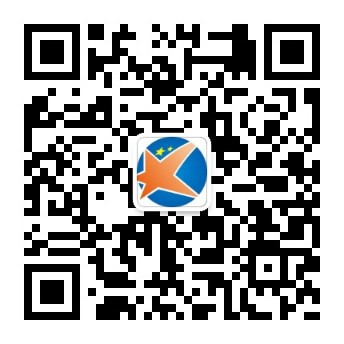初中名师视频课程免费试听1200分钟 |
||||
| 初一全科强化班辅导课程 免费听课 | 初二强化班辅导课程 免费听课 | 初三强化班辅导课程 免费听课 | ||
初中英语句型转换的解题方法
句型转换是中学英语基础训练的典型题型,也是中考必考的重点题型之一。在历年的中考中,句型转换题所占的分值一直挺大,而且有愈来愈高之势。这是因为这种题型可以有效地帮助学生理解并巩固所学的句型,掌握各种句型的内在含义,帮助学生掌握各种句型的句式结构和不同句式的变化技巧,理解并掌握句型与句型间的相互转换规律。只要学生掌握了句型转换的本质含义和解题技巧,不仅能熟练地运用各种句式和句型进行口头表达,还能够熟练地做句型转换题,把所学的句型和句式举一反三,灵活运用,这样就把口头运用转换成了笔头运用,从而培养了学生的综合语言运用能力。
一、由肯定句变为一般疑问句
由肯定句变为一般疑问句的规则是把助动词置于句子的主语之前而把句子变为疑问语序。解题时应把握以下几点:
1、句子的谓语动词如果是be动词,则把be动词直接提到主语之前。
(注:在肯定句和一般疑问句中主语的一、。二人称要互换)
- (1) Weare in Class 1, Grade 7 .
→ Are you in Class 1, Grade 7 ?
(2) He's polite and helpful .
→ Is he polite and helpful ?
(3) There are some birds in the big tall tree .
→ Are there any birds in the big tall tree ?
(4) Some Americans are going to visit our school next week .
→ Are some Americans going to visit your school next week ?
(5) A new modern bridge is being built over the Changjiang River .
→ Is a new modern bridge being built over the Changjiang River ?
2、句子的谓语动词中如果有情态动词,则把情态动词直接提到主语之前。
- (1) They can park their cars in front of the supermarket .
→ Can they park their cars in front of the supermarket ?
(2) I'd like some more dumplings .
→ Would you like some more dumplings ?
(3) Children must be kept away from fire .
→ Must children be kept away from fire ?
3、句子的谓语动词如果是现在完成时或过去完成时,则把时态中的助动词have,has,had提到主语之前即可。
- (1) I have finished reading the interesting book .
→Have you finished reading the interesting book ?
(2) The old woman had been dead before her dauther arrived .
→ Had the old woman been dead before her dauther arrived ?
4、当句子中没有be动词和情态动词等词时,句子的谓语动词如果是行为动词的一般现在时或一般过去时,在改为一般疑问句的时候,根据主语的人称和单、复数,需要添加助动词do(一般现在时)、does(一般现在时三单形式)或did (一般过去式)。
eg.(1) We enjoy the football matches very much .
→ Do you enjoy the football matches very much ?
(2) Her mother does some cleaning every morning .
→Does her mother do some cleaning every morning ?
(3)She went to see her doctor yesterday .
→Did she go to see her doctor yesterday ?
(注:在添加了助动词的一般疑问句中,行为动词一律为动词原形。)
二、由肯定句变为否定句
由肯定句变为否定句的规则是在句中的助动词之后添加否定词not。如果句中的谓语动词的情况和上述1、2、3点相同,则直接在be动词、情态动词和have、has或had之后添加否定词not 。除了be动词的am词形外,否定词not可以和助动词缩写为“助动词 + n't”。而如果句中没有be动词和情态动词等词时,句中的谓语动词是行为动词的一般现在时或一般过去时,则要先添加助动词do、does或did,再在其后添加否定词not,分别可以缩写为don't、doesn't和didn't 。
(注:在行为动词一般现在时和一般过去时的否定句中,行为动词也一律为动词原形。)
eg.(1) He is from England .
→He isn't from England .
(2) They can look for things on the Internet in Computer lessons .
→They can't look for things on the Internet in Computer lessons .
(3) I have seen the interesting film already .
→I haven't seen the interesting film yet .
(4) His brother often plays foogball after school .
→His brother doesn't often play football after school .
(5) My grandma came for dinner yesterday evening .
→My grandma didn't come for dinner yesterday evening .
下面几种句型在变为否定句时情况特殊一些,做题时须引起注意:
(1) I think + 宾语从句。
该句型在变为否定句时,否定词not应放在主句上,即为:I don't think + 宾语从句。
- I think it will rain tomorrow .
→ I don't think it will rain tomorrow .
(2) 祈使句
祈使句的特征是没有主语,以动词原形开头。在变为否定句时,应在动词原形之前添加助动词don't .
- (1) Water the flowers .
→ Don't water the flowers .
(2) Please clean the blackboard .
→ Please don't clean the blackboard .
三、句子的单复数互换
句子的单复数转换的规则是:对应句中的名词、代词、动词等,能变则变,不能变的,要么保留,要么去掉。要做到熟练掌握并运用这一规则,必须掌握名词的单复数的变化规则,代词对应的人称和单复数,动词的第三人称单数的变化规则等。在解题过程中,还必须具体情况具体对待。
- (1) The girl is from England .
→ The girls are from England .
(2) He is a polite and helpful boy .
→ They are polite and helpful boys .
上述例句中,划线的为能变的,没划线的为该保留的,加 号的a(an)为该去掉的。反之,在由复数变为单数时,则要根据句意在名词之前补上一个a (an)。
- They are English girls .
→ She is an English .
但是对于"There be"句型,单复数转换时句中的 a / an不能去掉,而要根据句式将其与some或any 互换。
- (1) There is aboat on the lake.
→ There are some boats on the lake.
(2) There isn't a tree behind the house.
→ There aren't any trees behind the house.
(3) Is there a pet dog in your home?
→ Are there any pet dogs in your home?
(4) There aren't any pictures on the wall of our classroom.
→ There isn't a picture on the wall of our classroom.
四、同义句转换
同义句转换就是将所给的句子换个说法。这一题型包含的内容多,形式杂。有词汇的同义转换,句型的同义转换等。一般说来,同义句转换主要有以下几种形式:
1、词汇的同义转换
词汇的同义转换主要有同义词、近义词的转换,反义词的转换,和同一个词在不同的句式中的不同的语序的转换等。
- (1) I spent50 yuan on the coat.
→ I paid 50 yuan for the coat. (同义词的转换)
(2) He likes playing football too.
→ He also likes playing football. (近义词的转换)
(3) Millie sits behind Daniel.
→ Daniel sits in front of Millie. (反义词的转换)
(4) They are all from America.
→ All of them are from America. (词序的转换)
2、句型的同义转换
常见的句型的同义转换主要有以下几种形式:简单句和简单句的互换,简单句和祈使句的互换,复合句和简单句的互换,复合句和复合句的互换等。
- (1) My favourite lesson is English.
→ I like English best. (简单句和简单句的互换)
(2) He is too young to go to school.
→ He isn't old enough to go to school. (简单句和简单句的互换)
→ He is so young that he can't go to school. (简单句和复合句的互换)
(3) You can't play basketball in the street.
→ Don't play basketball in the street. (简单句和祈使句的互换)
(4) She didn't go to the bookshop yesterday, she went to the library instead.
→She went to the library yesterday instead of the bookshop.(复合句和简单句的互换)
(5) I went to bed after my mother came back last night.
→ I didn't go to bed until my mother came back last night. (复合句和复合句的互换)
五、对句中的划线部分提问
对句中的划线部分提问是句型转换题的重要组成部分。该题型的主旨是确定划线部分在句子中是什么成分,用合适的疑问词放在句首代替该部分而构成特殊疑问句。解该题型可使用“三步提问法”。具体步骤如下:
1、先选择一个合适的疑问词。
英语中主要的疑问词有:what , who , when , whose , where , why , which , how , how old , how many , how much , how long , how often , how soon , how far , 等。疑问词的确定要根据句中的划线部分作什么成分。上述疑问词的用法主要为:
what :用来询问事物、人的姓名和职业。另外,和不同的词一起使用还可询问具体的方面,
如what time 询问时间,what colour 询问颜色等。
who :用来询问人,尤其指人与人之间的关系。
whose :用来询问归属,即和人之间的所有关系。
when :用来询问时间,一般指较大的时间范围。(小范围的时间可用what time )
where :用来询问地点。
which :用来询问哪一个,主要针对名词的定语提问。
why :用来询问原因,标志是because .
how :用来询问方式、程度。
how old :用来询问年龄。
how many :用来询问可数名词的数量,其后要接名词的复数形式。
how much :用来询问不可数名词的数量,其后要接不可数名词。如单独使用则表示询问多少钱或对事物了解或喜欢的程度。
how long :用来询问事物的长度,也可询问时间长度。
how often :用来询问某件事或某个动作在一定的时间范围内重复发生的次数,即频度。
how soon :用来询问某件事或某个动作从说话时候起要过多久才会发生,
即询问将来的情况,一般与将来时态连用。
how far :用来询问空间距离。
2、把原句变为一般疑问句。
3、把确定的疑问词放在句首,其后跟上一般疑问句的语序,把划线部分省略即可。
(注:如果句中的划线部分是主语或主语的定语,则可用疑问词直接替换而不用一般疑问句的语序。)
举例说明:
1、Her mother often gives her nice presents .
思考:本句中的划线部分Her mother 在句中作主语,因而在确定了疑问词who之后,不用将原句改为一般疑问句,直接替换即可。改写后的句子为:Who often gives her nice presents ?
2、The boy on the yellow bike is Lucy's brother .
思考:本句中的划线部分on the yellow bike 在句中作主语The boy 的定语,限定是哪一个男孩,因而确定的疑问词是which, 直接替换后的句子为: Which boy is Lucy's brother ?
3、I spend about half an hour a day reading English .
思考:本句中的划线部分不是作主语,也不是作主语的定语,因而适用“三步提问法”。
(1)先确定疑问词。划线的about half an hour 表示一个时间长度,因而疑问词为how long .
(2)把原句改为一般疑问句为:Do you spend about half an hour a day reading English ?
(3)把疑问词how long 放在句首,其后跟上一般疑问句,把划线部分去掉,最终的句子为:
How long do you spend a day reading English ?
4、Our teacher will be back in ten minutes .
思考:本句中的划线部分不是作主语,也不是作主语的定语,因而也适用“三步提问法”。
(1)先确定疑问词。划线的in ten minutes 和一般将来时态连用,表示“在十分钟后”或“过十分钟”,因而疑问词为how soon .
(2)把原句改为一般疑问句为:Will your teacher be back in ten minutes ?
(3)把疑问词how soon 放在句首,其后跟上一般疑问句,把划线部分去掉,最终的句子为:
How soon will your teacher be back ?
